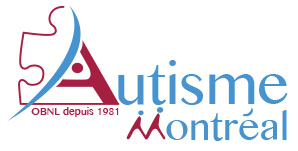The Situation of Autism in Quebec
The $18 million budget that was given for autism and PDDs is a major improvement. As a matter of fact, it shows the official recognition of this clientele: when you are part of the government’s budget, it means that your needs have finally been recognized. This money will allow us to move a bit forward, but if the above-mentioned problems are not solved, if there isn’t a better action plan developed and if there is no real coordination of efforts, autism and PDDs will remain in a deadlock at the national level. It is just like a wheel that cannot stop turning:
Sure indicators of the increase:
a) Waiting lists in all children’s hospitals and other establishments where diagnoses are being made, ranging from eight to 12 months. This situation has been the same since 1998-1999.
b) The day-care centres (Centres de la petite enfance) have told all the joint action community and they are worried about the ever increasing number of children diagnosed and the requests for services for this clientele.
c) The CLSCs also have been experiencing difficulties for the last few years. There are indeed waiting lists for the family support program and on those, you can find mostly families with one or more children with PDDs. Certain CLSCs even have a waiting list for the access to the creation of a file, according to the access mechanisms. The CLSCs are supposed to take care of the clientele and coordinate the requests for services with all the various establishments concerned (because of the waiting lists, it takes even longer to obtain the services required).
d) In the rehabilitation centres for the intellectually handicapped, the waiting lists are getting longer when you want to obtain the different services offered, but mostly regarding early intervention. So, there are waiting lists for:
- Early intervention
- Educational help
- Socioprofessional program
- Residential program
- Behavior disorders.
In the field, we can see that these centres are becoming service centres for PDDs and that intellectual handicap is now second.
e) The increase in applications for allowance for handicapped children has given rise to requirements, constraints and restrictions regarding the exclusion of children because of a lack of budget.
f) Parents associations receive more and more requests which could well be of more than 90% per year.
g) However, the most striking and reliable indicator remains the requests for schooling, because of the scoring system related to the classification of students and financing for each student.
In 1989, the CSDM (Commission scolaire de Montréal) was breaking new ground by opening the first specific class for autistic children in a regular setting. In 2003, this school board now has 42 classes.
Nevertheless, the mix up surrounding diagnoses can lead to false scoring. The statistics coming from the MEQ (ministère de l’Éducation du Québec) are quite significant and demonstrate a continuous increase.
It is just like a wheel that cannot stop turning:
- Increased cases of autism/PDDs
- Increased requests and needs
- Lack of budget
- Insufficient and fragmented services
- Increased disorders and problems related to the lack of services.
